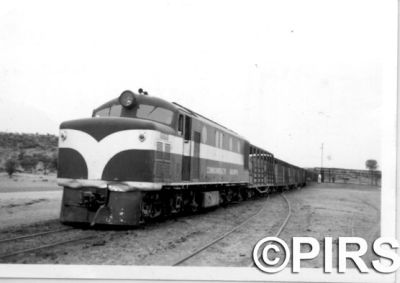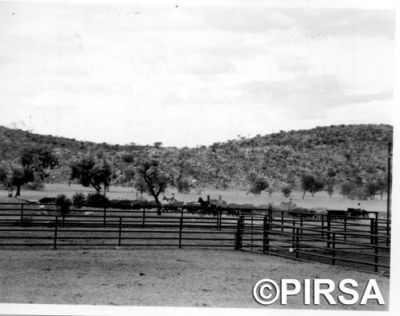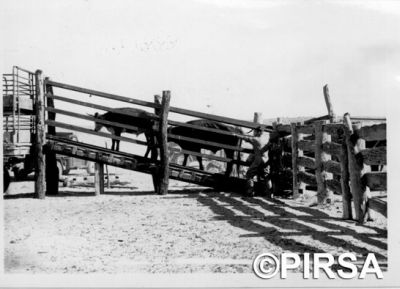Transportation
Rail Transport
As the colony developed, and particularly with the discovery of copper to the north of Adelaide, the slow, rough and often impassable tracks led to a strong push for railway lines. This was aimed to improve access to Adelaide for transport of both people and goods. Export products such as wheat could be shipped from the various local ports along the gulfs, but with no export markets the destination of livestock was Adelaide. Meinig (Pascoe JJ, History of Adelaide and Vicinity, Hussey & Gillingham, Adelaide, (1901)) reports that in 1860 the rail reached Kapunda, and soon after this time lines from the hinterlands were being constructed to the ports along Spencer’s Gulf. By 1884 there was a broad gauge (5 feet 3 inches) line to Terowie and a narrow gauge (3 feet 6 inches) line from there to Farina, reaching Oodnadatta by 1891 and then extended to reach Alice Springs by 1929. This gave access to the southern markets for the northern SA and central Australian cattle.

Photo No.: 103768 Title: Alice Springs cattle train. Date: May 1959
From the 1890s cattle were thus able to be moved by rail to the Adelaide markets from the north. In 1887 the broad gauge line to Victoria was completed. The changing of gauges meant cattle had to be unloaded, rested and reloaded - both increasing bruising, and travel time plus it was also a costly exercise out of the control of the pastoralist.
1980s changeover of the narrow gauge northern line to standard gauge by laying a new line further west accentuated the move to road transport from the northern cattle properties. The line skirted the western edge of the northern cattle properties and once loaded on trucks it was more efficient to send the cattle directly south to the saleyards or abattoirs.
Overlanding
In January 1838, Joseph Hawdon overlanded from the River Hume 335 head of cattle, arriving completely unexpected in Adelaide on April 3 1838 and subsequently selling the stock at a handsome profit. (Maurovic Richard, The Meat Game, P2, Wakefield Press, Kent Town, SA (2007)). This was followed by a number of “overlands” of sheep and cattle, providing food for the colony and the breeding basis for the State’s flocks and herds.

Photo No.: 103765 Title: Droving Northern store cattle to trucking yard for road transport. Date: May 1959
As mentioned above the first transport role of cattle involved their use as draught animals. The overlanding of cattle from NSW was the way cattle numbers gained a foothold in SA, and droving remained the only way to move cattle until the railways were constructed. In “Pastoral Pioneers” it is noted that Dutton also overlanded in late1838, with Lieutenant WG Field and A Baker overlanding 600 to 700 arriving June 1839. (Various Government Statistical Registrars and Livestock Statistical publications) By 1844 they were grazing 1000 head at Yankalilla. Eyre and others brought cattle across but those that arrived in best condition were the first herd by Hawdon. John Bull was an early stock agent on East Terrace and later grazier in the Adelaide Hills, where he bought overlanded cattle for £13 10/- but sold them after fattening for £4 when the market collapsed demonstrating he fickleness of the market!
George Hamilton followed others in 1839 with 800–900 from Port Phillip to Adelaide. “Mr Hamilton immediately set about disposing of his cattle, which had increased largely by purchases on the journey and by the progeny of the cows. We find the following advertisement in the Adelaide press of October 1839 "The undersigned has for sale a superior herd of cattle, consisting of aged bullocks and dairy cows, selected expressly for the Adelaide market from two of the best herds in New South Wales. They are in good condition and can be seen at Mr. Mundy’s station near Mt Barker. A great number of cows have calves by their sides, and would suit any persons desirous of establishing a dairy. The bullocks are the finest that have yet been brought from Sydney’. George Hamilton, 17 October, 1839.” (Pastoral Pioneers of South Australia Vol 2, Publishers Limited, P45, (1925)).
Similarly Captain John Finnis overlanded “no less than 800 head” in 1840 but the market had been filled and he “found considerable difficulty in disposing of the original herd of cattle brought overland. They arrived in store condition but Eyre’s consignment was sold at £9 a head and Finniss’s cattle had to be fattened over summer. While he thought of starting a butcher shop, a heat wave with temperatures up to 119º F dissuaded him. “No one got rich out of the speculation, although the party had risked their lives with the natives on the banks of the Murray.” (Pastoral Pioneers of South Australia Vol 2, Publishers Limited, P47, (1925)).
Live Cattle Exports
In recent times a market for store cattle has developed in Asia (particularly Philippines and Indonesia) although the distance from our southern ports has made this relatively uneconomical for local cattle. However cattle in the Northern Territory have been attracted to this market, impacting on the number of cattle travelling south for fattening and slaughter.
Stock Routes
Overlanding or droving cattle were the only means of transporting them to market or from property to property prior to motorised rail and road transport. Initially it was a lucrative business when Adelaide was short of meat. References to pastoral ventures in “Pastoral Pioneers” (Various Government Statistical Registrars and Livestock Statistical publications) which did not receive profitable returns showed the riskiness of the business in the early days of the colony. Droving became an integral part of the beef industry, and while today we associate it primarily with the far flung pastoral areas, until motorised transport became the norm, cattle were all walked to markets, abattoirs or between properties.
Information on droving and on the development of stock routes is provided in detail in Leith Yelland’s book “Pads, tracks and waters”. (Statistical Registrar of SA 1884.)
The routes followed depended on water availability, be it natural, man made wells or bores or tanks, as were prevalent on the West coast where underground water was unprocurable. The key bores along the northern routes were put down in the 1890s and early 1900s.
There are still portions of the original travelling stock routes along which major roads now traverse, particularly in the Orroroo to Wilpena area. In the far north the routes to the northern rail line at Marree still exist but were last used for commercial cattle movement in the early 1970s. Yelland reports that an estimated number of 32,000 cattle were moved along the travelling stock reserves in 1889. (Statistical Registrar of SA 1884.)
Road Transport
It was in the 1920s that road transport of cattle commenced, and it soon became a threat to the railways to such an extent that controls were placed on road transport in 1930. Livestock and wool within certain corridors had to be carried on rail. This and its various regulations remained until the 1960s. (Technology in Australia 1788–1988, Ch 2, Australian Academy of Technological Sciences and Engineering, Melbourne (1988), (Online 2000)).

Photo No.: 103762 Title: Loading Northern store cattle at Marree for road transport. Date: 18 April 1961
The Federal Government funded “beef roads” in the 1960s, allowing Territory cattle to be trucked to the Alice Springs railhead for railing south. Similarly the Birdsville track was upgraded bringing to an end the era of the long distance drover.
